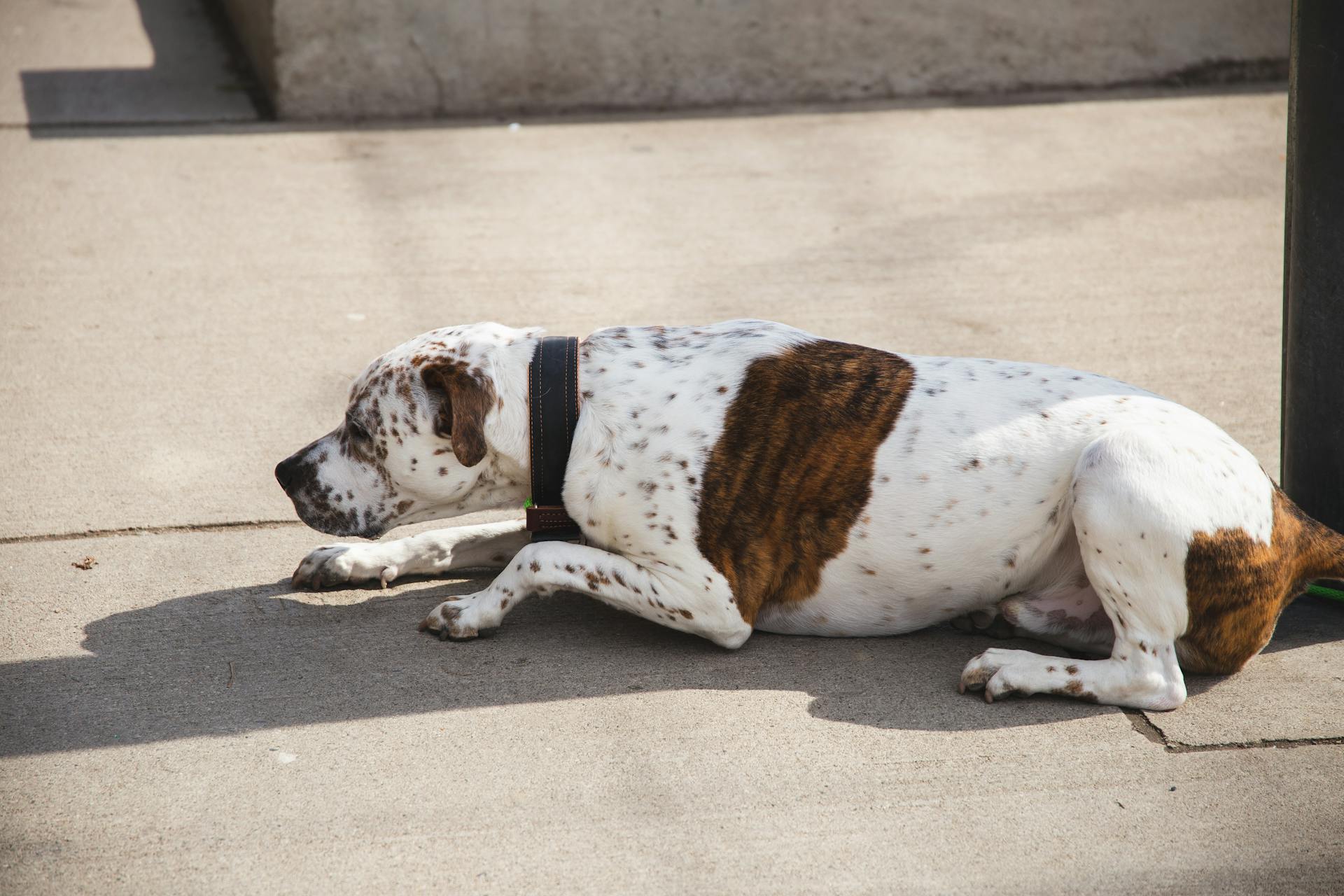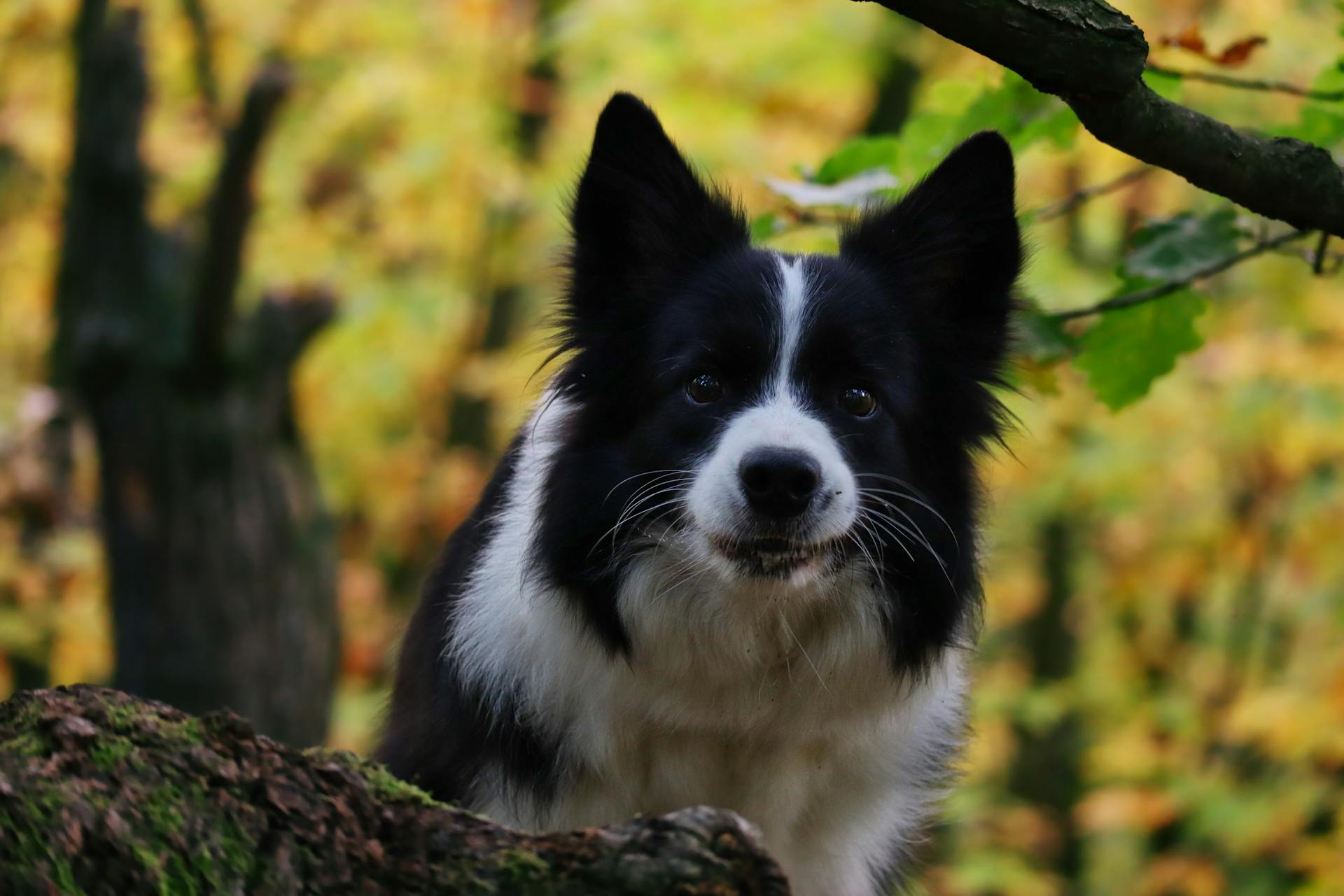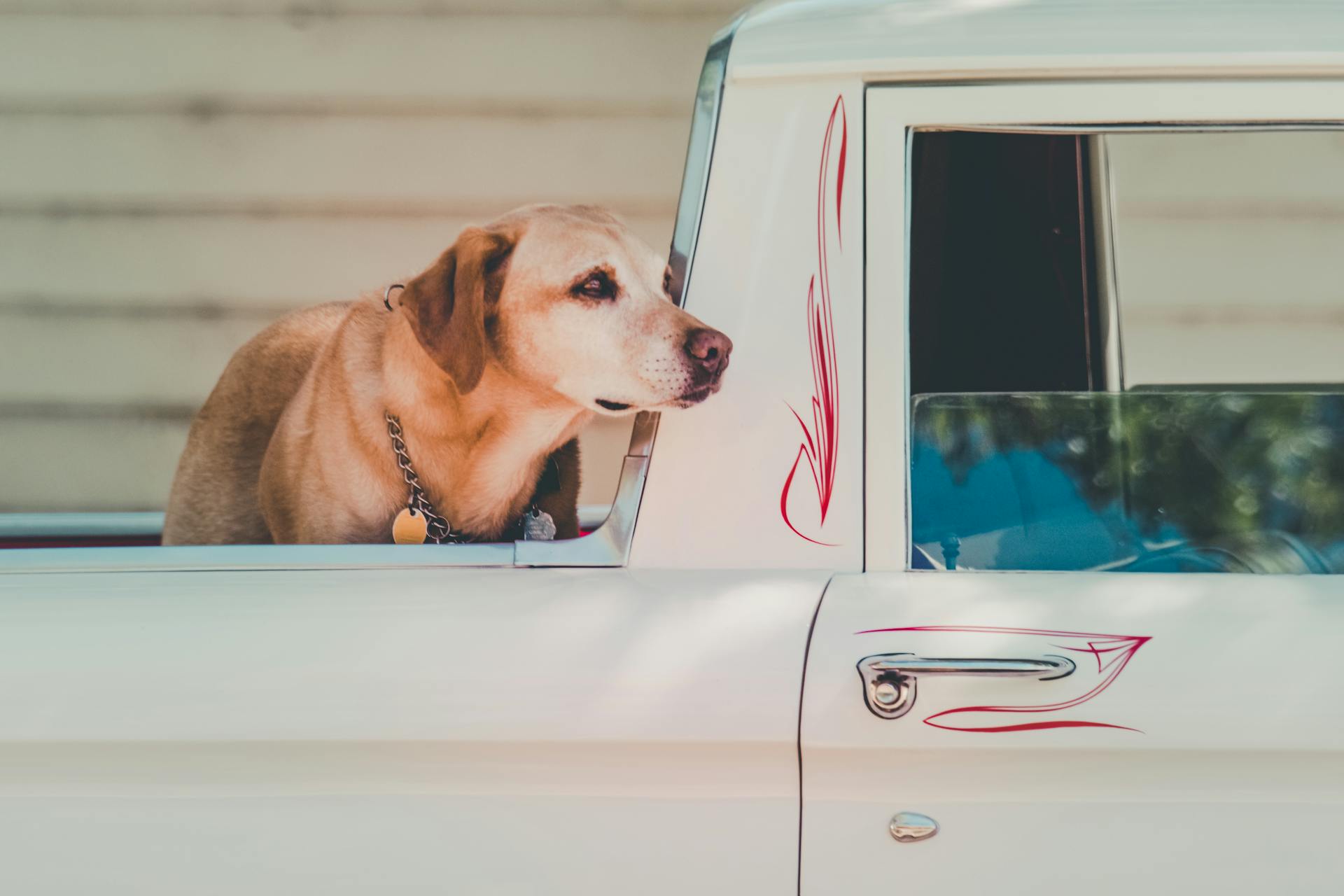
The Plott Hound Mix Lab is a unique and lovable breed that combines the best traits of two beloved dogs. They are generally friendly and outgoing, making them a great addition to families.
They are also highly energetic, requiring regular exercise to stay happy and healthy. This breed needs at least 30 minutes of exercise per day, which can be achieved through walks, runs, or playtime in the yard.
Their short coats are easy to maintain, but they do shed seasonally. Regular brushing can help reduce shedding and prevent matting, which is especially important for this breed.
Plott Hound Mix Labs are prone to certain health issues, including hip dysplasia and eye problems. Regular check-ups with a veterinarian can help identify these issues early on and prevent more serious problems from developing.
Take a look at this: Plott Hound Health Issues
Temperament and Personality
The Plott Hound Lab mix is a unique breed with a distinctive temperament. They are intelligent, compassionate, and self-assured, making them devoted to their family and hesitant to approach strangers.
Their independent nature requires strict, constant training, but they want to please their owners. Early socialization is key to developing a well-rounded adult, and enrolling them in a puppy class can help.
Plott Hounds can be stubborn and independent, but they are friendly with other animals and children. They make great family pets, but may be best for those who are used to working with animals.
Their high intelligence level and strong tracking abilities make them apt as police dogs. However, their high-pitched shrill bark can be a nuisance for neighbors in apartment living.
Here's a comparison of the Plott Hound and Labrador Retriever breeds:
Their sensitivity level is a bit higher than other breeds, and they don't like irregular daily routines or noisy households. They are average dogs when it comes to affection level, but may seem unfriendly due to their independence.
Health
Plott Hound mix Lab dogs can live for around 11 to 13 years, which is slightly shorter than purebred Labs.
They are prone to hip and elbow dysplasia, a deformity of the joint that can cause serious pain and mobility issues as they get older.
Lab hound mixes, especially larger ones, can also be prone to joint dysplasia, bloat, allergies, and gastric torsion.
Regular ear cleaning is a must for these dogs, as their long ears can close their hearing passageways and lead to ear infections and hearing problems.
Lab hound mixes have a tendency to overeat and develop obesity when their diet is not strictly controlled.
A breeder should offer a health guarantee on puppies and be honest and open about health problems in the breed.
A moderate energy dog like the Plott Hound mix Lab will need regular exercise to keep their energy level down, such as long walks and hikes.
They can be prone to vision problems and may lose some of their sight as they age.
A good quality dog food with animal-based protein is essential for preventing joint problems in Lab hound mixes.
It's best to invest in better quality food rather than more food, as Lab hound mixes have a tendency to overeat.
Proper socialization is crucial for these dogs, and they should be taken to the park and doggy daycare to get around many people and dogs.
Grooming and Diet
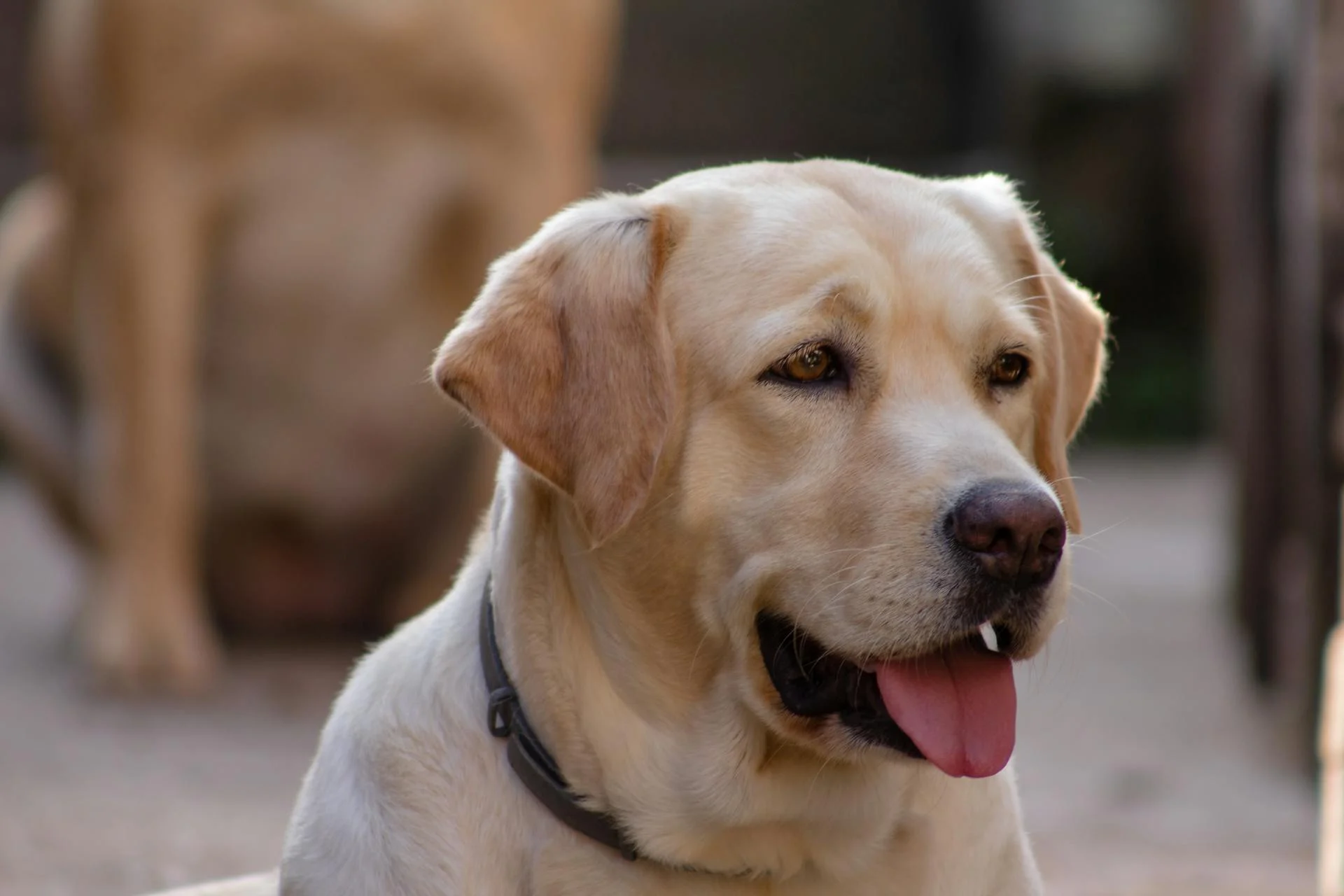
The Plott Hound mix Lab is a relatively low-maintenance breed when it comes to grooming and diet. They require only a weekly brushing with a rubber curry brush or hound mitt to keep their coats looking dazzling.
To determine if your Plott Hound mix Lab is overweight, look for a visible waist and feel their body fat percentage by running your hands along their back. If you can't see their ribs but can feel them, it's a sign they may need to lose some weight.
A healthy Plott Hound mix Lab diet consists of 2-3 cups of premium dry food per day, split between two meals. However, their appetite will vary depending on their size, age, build, metabolism, and exercise level.
To prevent bloat, a common issue in Plott Hounds, feed them twice or three times a day and avoid exercise after meals. You can check for signs of bloat by looking for a swollen abdomen or vomiting.
Here's a quick summary of their grooming needs:
Grooming
Grooming is an essential aspect of dog care, and it's great that you're taking the time to learn about it. The Plott Hound Lab, for instance, has a simple grooming routine that requires only a weekly brushing with a rubber curry brush or hound mitt.
This breed sheds minimally, making it a great choice for those with allergies. To keep their coat looking its best, brush your Plott Hound Lab once a week to control shedding.
You can use a dog-specific shampoo during bath time to prevent the water from removing the coat's natural oils. A weekly exam of your Plott Hound Lab's floppy ears is also crucial to prevent ear infections.
To get rid of tartar, brush your Plott Lab's teeth at least twice every week. This will help prevent dental problems like gum disease and bad breath.
Here's a quick rundown of the Plott Hound Lab's grooming needs:
By following these simple grooming tips, you'll be able to keep your Plott Hound Lab looking and feeling its best.
Diet
When it comes to feeding your Plott Hound Lab, you'll want to make sure you're giving them the right amount of food. Two to three cups of premium dry food per day, split between two meals, is a good starting point.
Their appetite will be influenced by their size, age, build, metabolism, and exercise level, so be prepared to adjust their food intake accordingly. Each dog is unique, just like people, so don't expect them to eat the same amount as their neighbor.
You can tell if your Plott Hound Lab is overweight by looking at them and feeling their body fat percentage. A visible waist and easily felt ribs are good indicators of a healthy weight.
To prevent bloat, a serious health issue in Plott Hounds, feed them two or three times a day and avoid exercising them right after meals.
Here's a comparison of the average daily food consumption for Plott Hounds and Labrador Retrievers:
Keep in mind that both breeds are prone to obesity, but the Labrador Retriever has a higher risk.
Size and Characteristics
The Plott Hound mix Lab is a unique breed that combines the best qualities of both parent breeds. One of the most noticeable differences between the Plott Hound and Labrador Retriever is their size.
The Plott Hound is considered a medium-sized dog, typically weighing between 40-75 pounds (18-34 kg). In contrast, the Labrador Retriever is a large breed, with males weighing between 60-75 pounds (27-34 kg) and females weighing between 55-70 pounds (25-32 kg).
While both breeds have a similar average height, the Plott Hound's height can vary slightly. On average, a Plott Hound stands around 22 inches (56 cm) tall, while a Labrador Retriever stands around 22-23 inches (56-58 cm) tall.
Here's a comparison of the two breeds' size and weight:
Overall, the Plott Hound mix Lab will likely inherit the medium size of the Plott Hound, with a weight range of around 40-75 pounds (18-34 kg) and a height of around 22 inches (56 cm).
Training and Behavior
Training a Plott Hound mix Lab requires patience and consistency, as they can be stubborn and headstrong. Socializing them with different kinds of dogs since they're puppies is crucial to help them coexist peacefully with other canines.
To prevent destructive habits like barking unnecessarily or chasing after moving objects, obedience training is essential. Commands like "sit", "stay", and "come" can help them learn to behave.
Plott Hound mix Labs are generally easy to train, but they do require consistent and positive reinforcement. They have a sharp memory, so harsh methods should be avoided.
Here are some key training tips for Plott Hound mix Labs:
- Socialize them with other dogs and people from an early age.
- Teach them basic commands like "sit", "stay", and "come."
- Use positive reinforcement techniques like treats and praise.
With proper training and socialization, Plott Hound mix Labs can thrive in a family environment.
Bite Characteristics
When training your dog, understanding their bite characteristics is essential. The Plott Hound and Labrador Retriever are two breeds with relatively ordinary bite forces, ranging between 200 and 400 PSI.
Their biting potential is another factor to consider. A Plott Hound has a low chance of biting somebody, whereas a Labrador Retriever has an average chance.
A different take: Black Lab Redbone Coonhound Mix
Both breeds have a strong tendency to nip, chew, play-bite, or herd people, making them mouthy dogs. This means they may require extra attention and training to ensure they don't develop bad habits.
Here's a comparison of the biting potential of the two breeds:
Keep in mind that every dog is unique, and their behavior may vary depending on their individual personality and training.
Activity and Playfulness
Both Plott Hounds and Labrador Retrievers are highly playful breeds, so if you're looking for a fun-loving companion, either one might be a great fit.
They require a lot of exercises, with Plott Hound dogs needing a lot of physical activity to keep them happy and healthy.
In terms of apartment living, neither breed is ideal, as they both have high energy levels and require regular exercise and attention.
Here's a comparison of the two breeds' energy levels and exercise needs:
Their high energy levels mean they need regular walks and playtime to keep them from getting bored or restless.
Plott Hounds are quite energetic dogs and don't spend too much time sleeping, while Labrador Retrievers don't need too much sleep either.
Overall, both breeds are active and playful, making them a great match for families or individuals who enjoy outdoor activities and can provide plenty of exercise and attention.
Training
Training a Plott Hound requires patience and consistency. They have a stubborn and headstrong nature, making them unsuitable for novice owners.
Socializing your Plott Hound with other dogs, especially from an early age, is crucial for peaceful coexistence. Taking them to dog parks or hosting puppy parties at home with well-trained friends' pets can help.
Obedience training is essential to curb destructive habits like unnecessary barking or chasing moving objects. Commands are key to helping your Plott Hound become a well-behaved companion.
Here are some tips to keep in mind when training your Plott Hound:
- Socialize your Plott Hound with different kinds of dogs since they are puppies.
- Teach your dog the art of sharing during socialization to help them get over their possessive nature.
- Use obedience training in the form of commands to help them overcome destructive habits.
Adaptability and Lifestyle
If you're considering bringing a Plott Hound mix Lab into your family, you'll want to think about their adaptability and lifestyle needs.
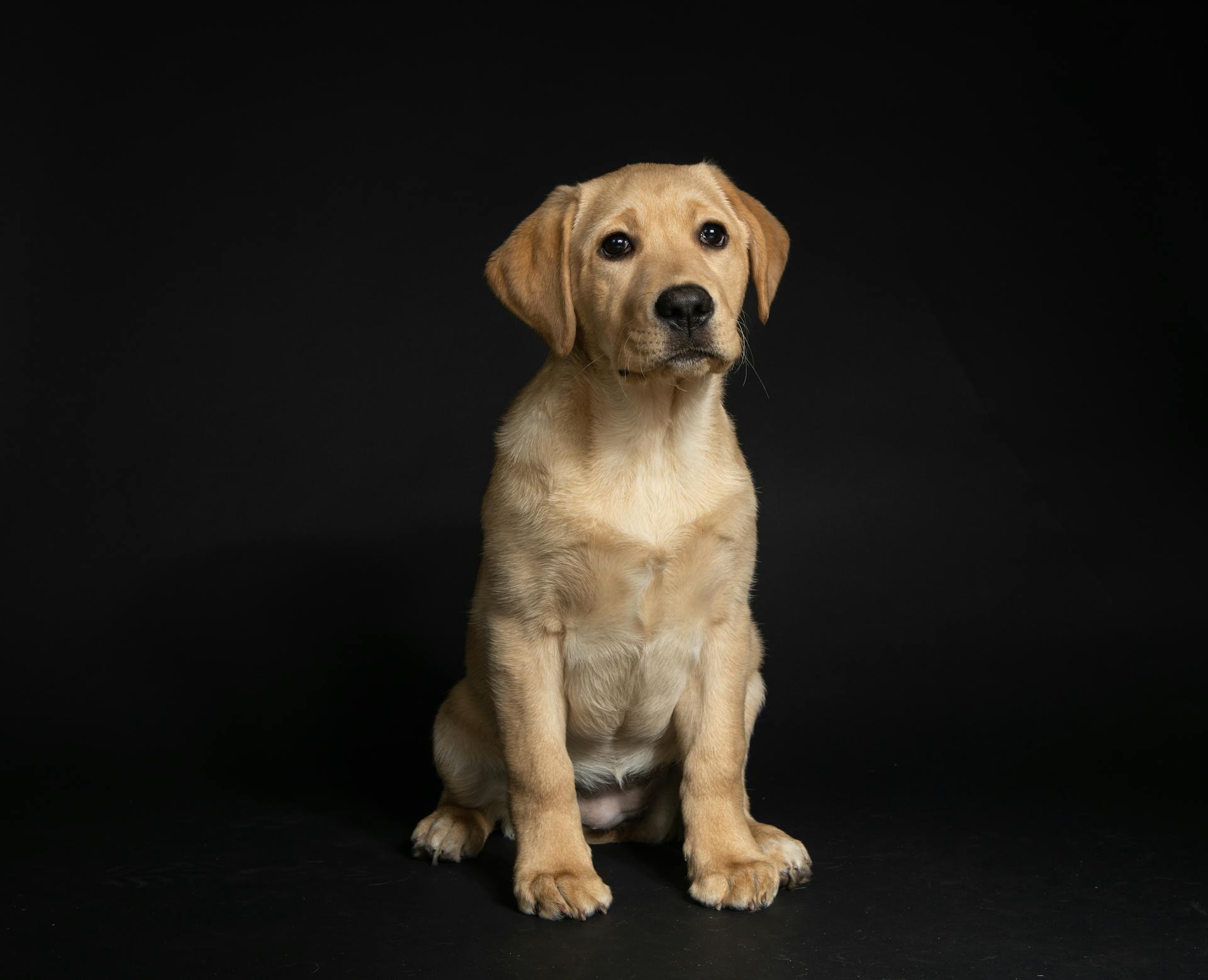
Plott Hound mix Labs can adapt to lifestyle changes and different living environments quite okay usually. This makes them a great choice for families who like to travel or have varying schedules.
However, it's worth noting that both Plott Hound and Labrador Retriever breeds tend to have separation anxiety when left alone. This means they'll need regular attention and exercise to prevent boredom and destructive behavior.
Labrador Retrievers, in particular, bond very closely with their owners, which can make leaving them alone at home a challenge. If you have a busy schedule, you may want to consider hiring a dog walker or asking a trusted neighbor to check in on your pet.
Here's a quick comparison of the two breeds' adaptability and independence:
Overall, both breeds require attention and care, but Labrador Retrievers may need a bit more TLC due to their strong attachment to their owners.
Recognition and Allergies
The Plott Hound mix Lab is a great choice for many families, but it's essential to consider the potential allergies and recognition of this breed. Both Plott Hounds and Labrador Retrievers have a dense, waterproof coat that sheds moderately, which can be a concern for people with allergies.
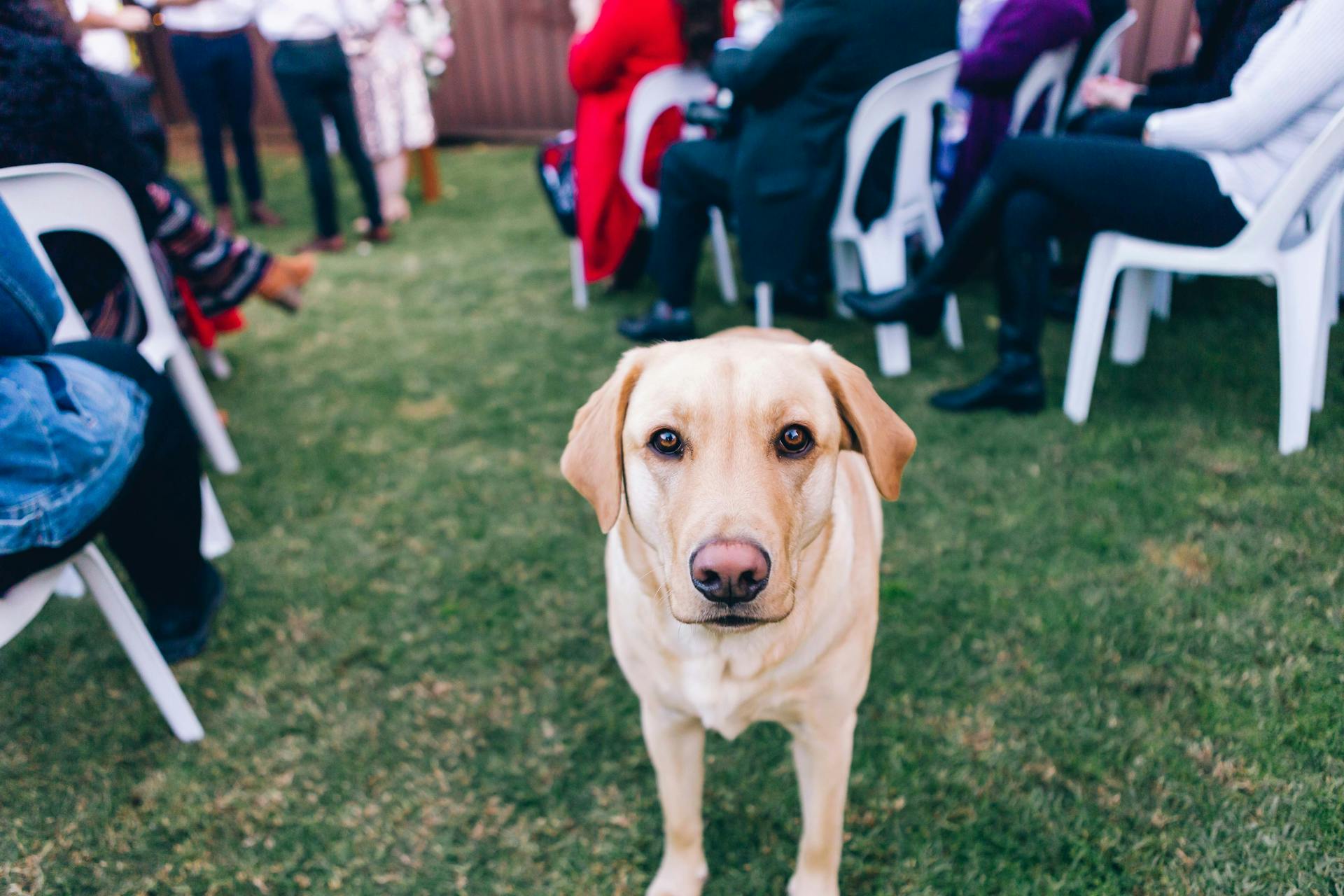
If you're allergic to dogs, you may want to consider the shedding level of the Plott Hound mix Lab. According to the article, Plott Hound dogs shed none to minimal, while Labrador Retriever dogs shed moderately. This means that the Plott Hound mix Lab may be a better choice for those with allergies.
In terms of recognition, both Plott Hounds and Labrador Retrievers have a strong instinct to follow their nose and can be easily recognizable by their distinctive coats. The Plott Hound has a fine, short coat that requires minimal grooming, while the Labrador Retriever has a dense, hard coat that also requires minimal grooming.
For another approach, see: Dog That Looks like a Lab but Smaller
Recognition
Recognition is a crucial aspect of allergies, and it's often the first step in getting the right treatment. Symptoms can vary widely from person to person, but common signs include hives, itching, swelling, stomach cramps, diarrhea, and difficulty breathing.
Some people may experience mild symptoms, while others can have severe reactions. The severity of an allergic reaction depends on the amount of allergen present, the person's sensitivity, and the speed of treatment.
It's essential to be aware of the signs of an allergic reaction, especially if you have a history of allergies in your family. Common allergens include peanuts, tree nuts, milk, eggs, fish, shellfish, wheat, and soy.
Allergies and Grooming
If you're considering bringing a new furry friend into your home, allergies and grooming are two important factors to consider. The Plott Hound and Labrador Retriever are two breeds that have distinct characteristics when it comes to allergies and grooming.
Both breeds have short coats, which means they require minimal grooming. The Plott Hound has a fine coat, while the Labrador Retriever has a dense, waterproof coat that's hard and short. Both breeds are considered low-maintenance when it comes to grooming.
Here's a comparison of the two breeds' grooming needs:
It's worth noting that both breeds shed moderately, with the Labrador Retriever shedding more than the Plott Hound. The Plott Hound sheds none to minimal, making it a good choice for those with allergies.
The frequency of bathing is also important to consider. Both breeds require bathing every 3-4 weeks, as their coats tend to be longer, softer, and oilier than short-haired breeds.
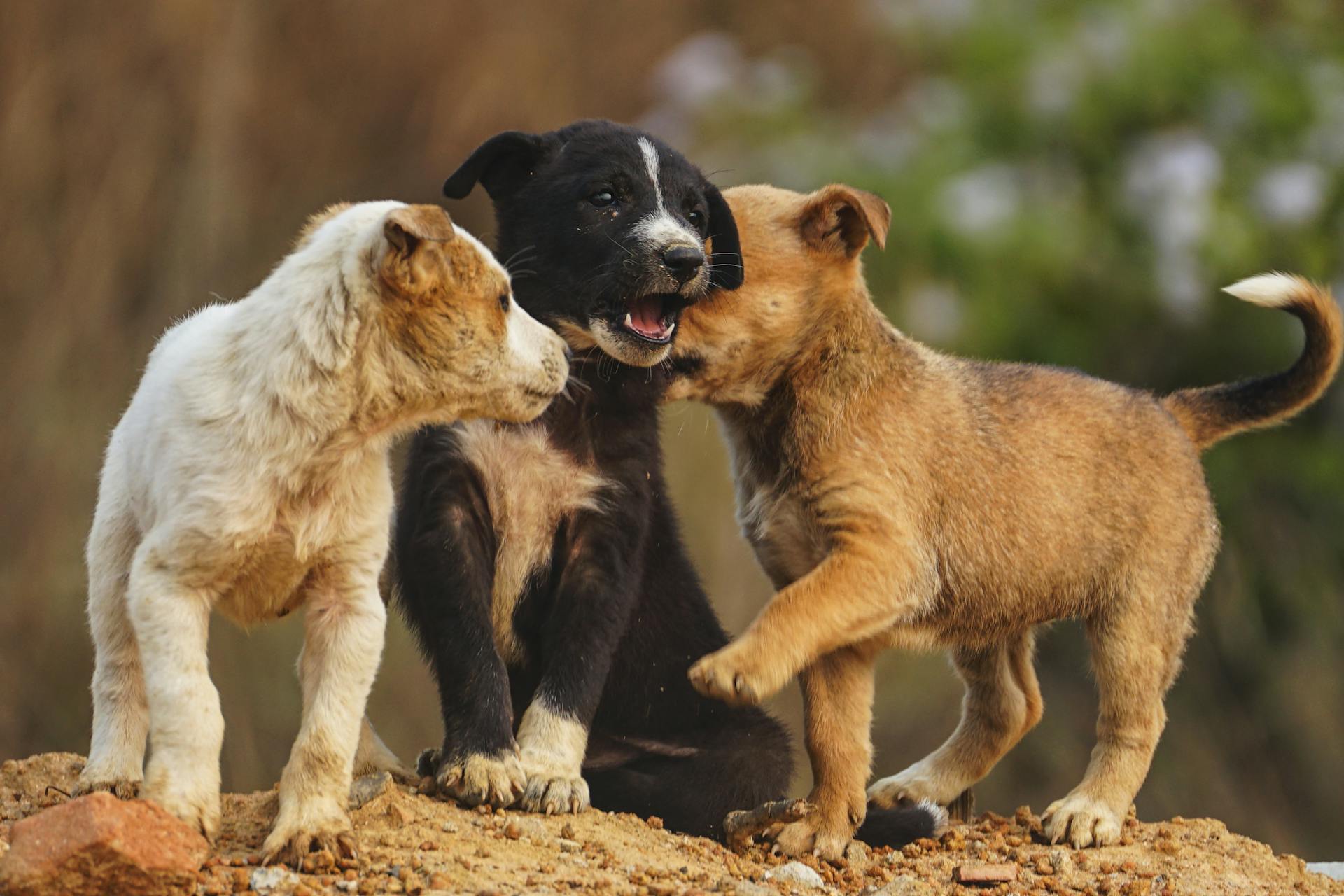
In terms of hypoallergenic breeds, neither the Plott Hound nor the Labrador Retriever is considered hypoallergenic. However, the Plott Hound's low shedding makes it a good choice for those with allergies.
Overall, both breeds are relatively low-maintenance when it comes to grooming, but it's essential to consider their individual needs and characteristics to ensure you're prepared to provide the best care for your new furry friend.
Frequently Asked Questions
What is the lifespan of a plott hound mix?
A Plott Hound mix typically lives for 12 to 14 years, inheriting the breed's long lifespan. With proper care, your Plott Hound mix can thrive for many happy years.
Are Lab hound mixes good dogs?
Lab Hound mixes are known for being affectionate, gentle, and even-tempered, making them a wonderful pet for many families. They can make great companions for those looking for a loving and laid-back dog.
Sources
Featured Images: pexels.com

